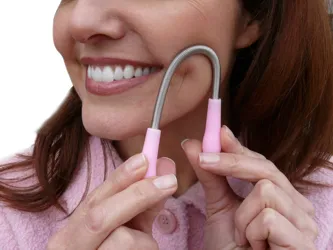
Laser Hair Removal: Good, Bad & Ugly
Introduction
Both women and men have struggled with hair removal for centuries. All types of hair removal systems also known as epilation, have their pros and cons. Basically when it comes to dealing with hair removal there are good, bad and ugly issues. Being beautiful or in this case hair free is not always a walk in the hair park. One of the most recent trends in hair removal is the use of lasers. The Good NewsThe good news about laser hair removal is the much longer lasting results. Because laser hair removal lasts much longer than any other method of hair removal, it is also more cost effective long term. Lasers can be used anywhere on the human body that grows unwanted hair. Yes, that includes that delicate pelvic area along with hair on your face, arms, underarms, legs. Men will often look at laser hair removal as a way to remove excessive hair on their chests, backs and arms. Remember the movie The 40 Year Old Virgin? The scene in the movie where he goes through pain to have excess hair waxed off his chest could have been eliminated with laser hair removal. Other good news about laser removal is that it can treat many hair follicles at once. This means that areas can typically be treated with laser hair removal in a mere fraction of time that other treatments like electrolysis or waxing might take. It also means less painful removal in certain areas of the body that might be extremely sensitive to plucking or waxing. This would include hair around the nipples or similar delicate body areas. Because laser removal requires a certain level of hair growth, this can be advantage by the fact that you will not be required to bother with hair removal as you prepare for your laser treatments. Of course this may be considered a disadvantage by people that have excessive hair growth on visible body areas. The BadOnly certain people are good candidates for Laser Removal. Only people with light skin tones and medium to dark hair hues are ideal clients for Laser Hair treatments. One of the Bad News about Laser Hair Removal, when performed on certain types of skin tones is the possibility of hyper pigmentation. Depending on each individual person, laser hair removal may have a limited life span of hairlessness. This can indicate the need for multiple (and expensive) repeat treatments. Although the cost of laser hair removal will vary according to where it is performed and the size of the area that is treated, the cost generally averages about $500 per treatment session with a total of 4-6 total treatments. Large areas of the body such as the entire back might cost more. Smaller areas of the body can cost less. The only way to determine the ultimate cost is to have an individual consultation at a professional clinic. If you are addicted to spray on tans or similar products, you have to wait for them to completely fade before undergoing laser hair removal or else there can be complications. Additionally it is important to avoid sun exposure for three to five weeks before treatment. Be sure to consult with your laser hair removal expert before taking that long cruise where you will be exposed to the sun for any extended periods. It should be noted that a tan can increase the risk of laser hair removal. Skin may be more prone to discoloration, swelling or blistering. The UglyYes, there are possible risks. Besides the danger of hyper pigmentation or the risk that not all the desired hair will be most effectively removed, there can be slight pain or discomfort. When laser hair removal is performed by a board-certified physician or his staff there are less risks then when performed by inexperienced technicians. Be sure to check all the credentials completely before agreeing to treatment. During the laser removal procedures a laser instrument is directed towards various parts of your skin. A cooling gel is usually applied to help protect the skin. The light from the laser penetrates the actual surface of the skin and attracts the hair follicles. The damage to the follicles will inhibit hair growth. Treated areas may turn red, may swell or in worst cases can blister. The reaction usually subsides within 48 hours. If it doesn't, you should contact your physician immediately. One possible problem with improperly performed laser hair removal procedures are the occurrence of burns which happen when the skin, rather than the hair follicles, absorb the laser energy. Thus it is very important to determine if you are an appropriate candidate for laser hair removable before undergoing any treatments. This will minimize risk of burns. Additionally it is important to avoid sun exposure for three to five weeks before treatment. Be sure to consult with your laser hair removal expert before taking that long cruise where you will be exposed to the sun for any extended periods. Dying To Be HairlessThermolase was one of the first companies to bring out a hair removal laser in the United States. As of 2006 they are no longer involved in this business. In 1998 a class action suit was brought against Thermolase by a consumer claiming that the SoftLight laser hair removal system did not provide long lasting results as promised. While laser hair removal was originally promised as a way to permanently remove unwanted hair a medial paper appear in 1997 which documented full regrowth of all hair removed by a laser. The laser hair removal community changed their marketing from "permanent removal" to "hair management strategy". Consumers have been bilked out of hundreds of thousands of dollars on treatments that did not do as promised. The SoftLight laser is no longer sold in the United States. In 1995, one century after the discovery of x-rays, FDA cleared the first laser for hair removal in the US, the SoftLight™ Nd:YAG by ThermoLase [2]. This device was rushed to market without adequate testing of effectiveness. It was marketed illegally as painless and permanent until FDA stepped in. It uses a carbon-based lotion as a chromophore. This lotion was rubbed into the skin following waxing, with the hope it would penetrate the follicle. The laser would then rapidly heat the carbon, causing a shock wave of energy that had the potential to damage nearby cells. This process was found to be more complicated and less effective than targeting chromophores that occur naturally in the skin. The device was sold to physicians and treatments were offered in a chain of proprietary clinics called Spa Thira, primarily in affluent communities. Consumers basically paid to be guinea pigs. By the time a medical paper appeared in 1997 which observed full regrowth of all hair [3], consumers had already spent hundreds of thousands of dollars on treatments. They quickly shifted their marketing strategy away from permanent hair removal to a "hair-management strategy," but word was beginning to get out. In 1998, a class action suit was brought against the company by a consumer alleging ThermoLase "advertised SoftLight laser hair removal as long lasting with the knowledge that such treatments did not achieve that result." [4] ThermoLase quietly settled out of court later that year. In 1999, following other lawsuits and an annual loss of over $41 million, they began closing or selling their spas [5]. In 2000, with the stock down 92% from its high, ThermoLase was folded back into its parent company, which no longer manufactures or markets SoftLight in the U.S. Who Gets to Use Lasers? The biggest current issue is who will be permitted to use this technology. Physicians, electrologists, and beauticians have all staked their claims, and it's up to each state to decide [26]. As would be expected, one survey showed that physicians feel they should maintain control of the device, and some nonphysicians have stated they are qualified to own and operate lasers [27]. As with x-ray use 100 years earlier, use of dermatological lasers is in danger of being rapidly debased into a cosmetic procedure. Self-proclaimed "laserologists" have set up "training institutes" for beauticians and other nonphysicians. Some even offer laser hair removal treatments to consumers without direct medical supervision. There is currently a legislative push in some areas to make lasers available for purchase to nonphysicians, proposed by those who stand to gain financially. Some argue this will make laser hair removal more widely available and drive down prices for consumers. Some consumer activists (including myself) have concerns that the likelihood of injury and quackery will increase if these devices are widely available to nonphysicians. For instance, several of the parties pushing to make laser available to nonphysicians in Florida are contributors, members and/or moderators of Kitty's Consumer Beware, a site I do not recommend [28]. Christian Raulin, M.D., another pioneering laser researcher, considers the issue of laser training "a serious problem." He notes:
More Data Needed As always, the best hope for consumers comes is that researchers and physicians continue to make their findings known in peer-reviewed journals. This is the only way to combat the hype rampant in the mainstream press, the manufacturer and practitioner promotional materials, and in the unreliable anecdotal reports from consumers, as discussed in my section on recommended and non recommended information sources. SummaryLaser hair removal can offer many advantages. It can also offer some disadvantages and dangers. Improperly performed procedures pose several risks and can lead to serious side effects. The key to experiencing the best possible results when considering laser hair removal is to make sure that you consult with a board certified laser hair removal expert to make sure you are a good candidate and your risks are outlined in advance. When performed with care, laser hair removal offers some excellent advantages over other types of hair removal. | |||
| Send this page to a friend.. | |||
| If you want to talk more about this or other hair care articles on HairBoutique.com or anywhere else, please post a message on HairBoutique.com's Hair Talk Forums.
|
Social Media Network Information
Please follow us on Twitter at: https://Twitter.com/HairBoutique. I look forward to meeting new people from all walks of Twitter and learning from their Tweets.

















